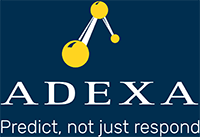Ingredients of Supply Chain Digitalization
Now a days almost every company is thinking of supply chain digitalization. Most feel that they need to get a system and maybe some AI/ML capability and they are on their way! It takes a lot more! Digitalization requires a digital twin of your supply chain, i.e. a digital representation of the physical world. Our terminology is a “Digital Mirror” to focus on every little aspect of your environment. Only then you have a true representation. Unfortunately, S&OP solutions as nice as they are, happen to be a very rough representation of the supply chain (they actually have a spreadsheet-like engine for capacity planning!) Accurate model of supply chain is a must. Otherwise you are looking into a very foggy mirror with a blurry vision to manage your supply chain. To get this first ingredient of digitalization, i.e. accurate model, you need S&OE capability to define the supply chain with as much accuracy as needed, resulting in executable plans rather than use of manual adjustments to make it viable.
The second requirement is data. More than just planning data. In order to make sense of what is going on and why things happen, all kinds of data are needed including data from ERP, CRM, IOT, MES, PLM and of course planning data. Moreover, there are three dimensions to data: past, present (real-time) and future (planning) data. To this end, the system needs to have the capability to deal with all these sources of data in a timely manner. Remember that all data can be inter-related. Attributes of a product or use of a substitute part# can play as much of a role in delivery performance as your inventory levels or rush orders. And this is where the third ingredient, i.e. Intelligence comes into action. It can prescribe how to build resilient plans and learn to improve over time.
The two ingredients above are critical to have before you can make systems create plans, learn and become more intelligent. Imagine a very skillful driver with blurry vision and foggy mirrors, i.e. not having a mental model of the physical world trying to operate the vehicle. Intelligence combined with accurate model and relevant data allows finding patterns of behavior that leads to causes of events. This means gaining the ability to predict the likelihood of events in the future. Examples are: predicting which materials or suppliers may cause lateness in winter, what equipment are likely to become bottlenecks when the temperature goes above 85 degrees or how the yield is going to change over the next few months. Once we know the causes then prescriptive algorithms are deployed to build resiliency into the plan.
With above three ingredients, companies can get very close to autonomous supply chain planning. Just like an autonomous vehicle, the system offers a roadmap to get to its destination, it senses the environment and reacts accordingly. And by maintaining relevant data it can improve to avoid potential road blocks and delays in future. For more information on digitalization click Here.

The most crucial 3 ingredients for supply chain digitalization: Accurate Model, Data, and Intelligence
For further information on how Adexa’s S&OP and S&OE work to avoid the aforementioned issues, please complete our short form to request for additional information.


